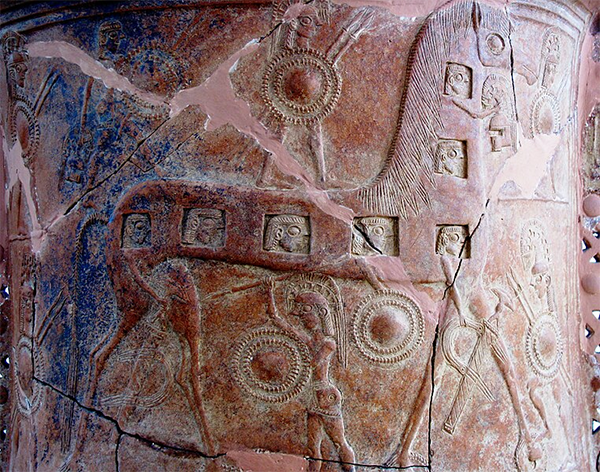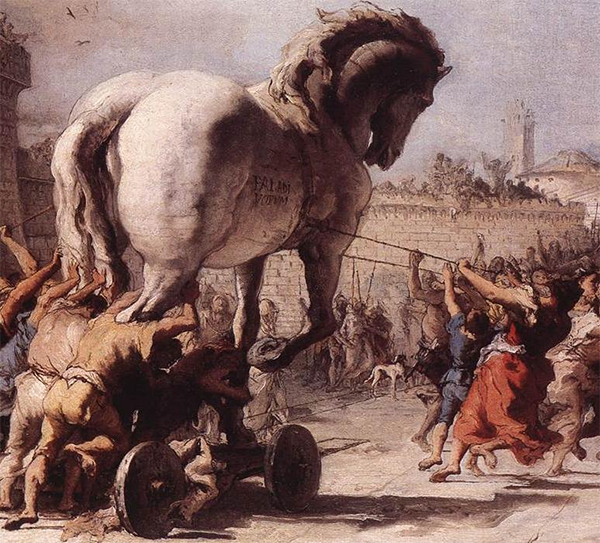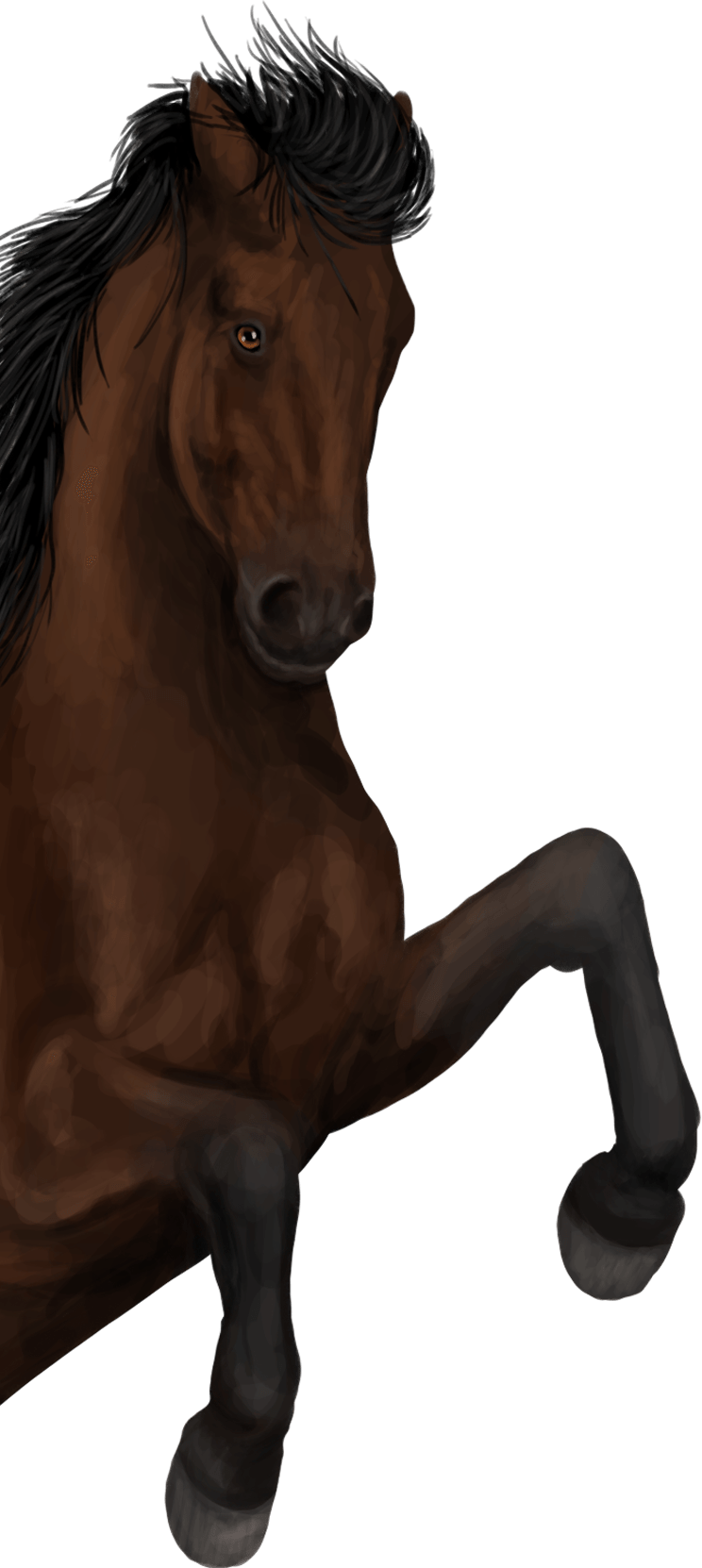This blog was written by: Luminescence
Mythology: the Trojan Horse
Today, we’re talking about the horse that managed to conquer the unconquerable city, that ended a conflict of ten years, but which caused an enormous slaughter in said city. Did I mention that this horse is wooden?
Origin
Once upon a time, long, long ago, a wedding between Peleus, a local king, and Thetis, a sea nymph, was held. All goddesses were invited, except Eris, the goddess of discord. She understandably didn’t like this and decided to ruin the party with a golden apple, on which
to the fairest one was written. This caused quite a bit of strife among the immortal wedding guests: Hera, goddess of marriage, Athena, goddess of wisdom, and Aphrodite, goddess of love, got into an argument about who deserved the beautiful apple. Zeus, who was getting sick of the quarrel, decided to consult a human: the Trojan prince Paris.
The three goddesses all attempted to convince Paris to choose hér. Eventually, the prince chose Aphrodite, who had promised Paris the most beautiful woman, Helen. There was just a slight problem: Helen was already married and not just to anyone, to the Spartan king Menelaos. But Paris managed to solve that just fine by taking Helen to Troy.
Menelaos was not amused by this development and took all the Greek city-states, which weren’t united at the time, to a war against Troy. I won’t summarise the entire conflict, but some important figures on the Greek side were the hero Achilles, son of Peleus and Thetis, commander Agamemnon, brother to Menelaos, the crafty Odysseus, king of Ithaka and the strong Ajax of Salamis.
On the Trojan side, we have, of course, Paris, son of the local king Priam. Another son of king Priam was Hector: he was also the main protector of Troy.
Death, death, even more death, lots of characters with a very interesting history that I sadly can’t discuss here due to the length… Anyhow, at this point, the war between Greece and Troy has been going on for ten years, and neither side seemed to be winning. Luckily (for the Greeks), the cunning Odysseus had thought of a trick: a gigantic wooden horse would be built, in which between 30 and 50 soldiers could hide. The horse was left in front of the city walls.
To avoid suspicion, the Greek Sinon told a story about the wooden horse, a gift to the goddess Athena and which would guarantee the safety of Troy for many years to come. The Trojans believed the ruse and allowed the horse through. The Greeks inside the wooden horse opened the city gates for rest of the Greek army at night. Many Trojans were killed, Helena was reclaimed, and the war was ended.
Background
The oldest form of this story is from Homer’s
Odyssee, in which a short summary of the siege is given. That story inspired a huge amount of, well, fanfiction: Arctinus of Milete, who might or might not have been a student of Homer, has written a more extensive version of the story. But the most famous version of the story is from the
Aeneid by Virgil: he added a priest called Laocoön. He warned the Trojans to no avail of the horse’s danger, but is strangled by two snakes, apparently send by Athena.
In general, the Trojan horse is assumed to be a figment of Homer’s imagination: it could possibly be a metaphor for the battering ram that was used to break the city walls. The battering ram might have been called ‘horse’, but then again, the horse could also symbolize an earthquake (both horses and earthquakes fell under the domain of Poseidon, the sea god): a possible Troy location has destruction signs that seem to indicate an earthquake. Another possibility is that the horse refers to a ship with messengers: the ship was called ‘the horse of the sea’ back in the day.
Art
The siege of Troy is a subject of many artworks, but this has to be one of my favourites.

Source image:
Travelling Runes, via Flickr.
This is the oldest visual representation of the Trojan horse and in my opinion, one of the best. Just look at that horse. My favourite part of this artwork is probably how the men inside the horse look. This vase shows a moment where the horse is already inside the city: around the horse, you see Greeks ‘fighting’ with Trojan women and children.
Fun facts!
1. The name
Trojan horse is also used for a specific type of computer virus: one that’s cleverly hidden in seemingly-innocent software!
2. Although the Trojan horse-ruse didn’t actually happen, similar tricks have been played over the course of history. One that comes to mind is the ‘Turfschip van Breda’, or the peat barge of Breda. During the Eighty Years’ War in the Netherlands, the Spanish had taken over the city of Breda. A captain however had come up with a smart trick: his peat barge had to get inside and outside of Breda often enough that the Spanish weren’t controlling his load anymore. That meant that a small amount of soldiers could be hidden inside the ship and carried inside Breda!

Source image:
Jan Luyken, via Wikimedia Commons.
How nice that you’ve read this blog! Did you already know of the backstory behind the Trojan War? And have you ever heard of the ‘Turfschip van Breda’?

Source image:
Giovanni Domenico, public domain, via Wikimedia Commons.





